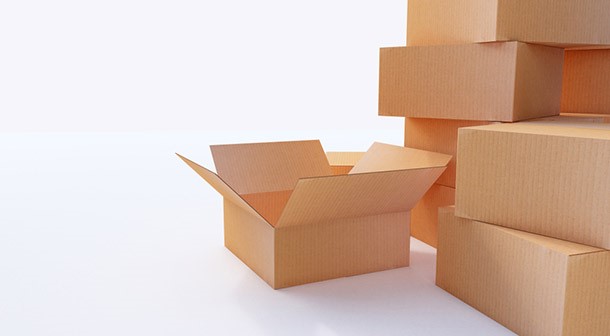Cardboard boxes are obviously one of the center results of the bundling business. Yet, it’s not difficult to fail to remember that the cardboard boxes you use consistently were once a not really humble tree. All in all, what is the interaction is for handing trees over to ridged cardboard? Well the stand by is finished! Kite Packaging have barbecued its technologists to let us precisely know the cycle for cleaning the natural substances and preparing them to make the cardboard boxes you purchase each day for your business.
Cardoard Boxes
To get this smooth completion Kraft paper should be produced using softwood trees that regularly have long strands, for example, Pine, Spruce and Fir trees. Most of European paper is made utilizing trees from practical woodlands possessed by SCA (Svenska Cellulosa Aktiebolaget – English: Swedish Cellulose Company) who plant two trees for each one cut down. Long strands are additionally better in pressure which is the reason Kraft paper is regularly portrayed as having a high tear and blasted opposition.
The vibe of Kraft paper can contrast contingent upon the kind of tree it has come from for instance Kraft from Scandinavian Spruce, Pine and Silver Birch is dull brown in shading, but Russian variations of a similar tree type seem a more fluctuated brown with dim patches. In Brazil, Eucalyptus and Spruce are utilized and the Kraft they produce is light brown, though Chinese trees have a yellowish tint because of the great straw substance in their Kraft.
Test paper liners are normally made of hardwood trees that have short strands, or reused paper which is the reason it is less expensive and has a more grating quality. Hardwood incorporates Oak, Sycamore, Birch and Chestnut and again is sourced dominatingly from feasible SCA woodlands.
Fluting
Fluted cardboard is the wavy piece of board sandwiched between the liners and invigorates a crate its and security from thumps and effect harm. To make the fluted impact rolls of paper are taken care of into a layered roller machine, this interaction has been around since the eighteenth century and was initially used to add unsettles to shirts and caps!
Most as of late R Flute was presented; this is an option in contrast to B woodwind board, with the presentation the equivalent however the thickness decreased to lessen store network expenses and save space for clients. R Flute is additionally alluded to as M or S woodwind and remembers advantages, for example, a 30% improvement for print quality, 30% more cases on a bed and around 30% less CO2 gases transmitted because of truck space reserve funds.
Obviously these woodwinds possibly depict single divider boxes – when you see a case that says ‘BC Flute’ or ‘Abdominal muscle Flute’ this is the point at which a twofold divider container has been indicated, the main letter is the fluting of the top layer of board and the subsequent letter is the base layer.
Creation
Since we have set up the key components that go into making a layered container all that should be done is to stick them all together.
The two liners are then clung to the board by the machine; the custom cardboard boxes is then cut each side with a round saw to give the board straight sides. The corrugator machine then, at that point, cuts the load up upwards of multiple times, contingent upon the size of the case; this is dictated by the FEFCO guide.
The FEFCO (European Federation of Corrugated Board Manufacturers) guide is the authoritative handbook for creased containers, and frameworks each style you could envision – with a few classes including 01 classifications for business rolls and sheets, 02 for opened sort boxes utilizing one piece of stuck board, 03 for telescope style boxes comprising of more than one piece (normally a base and top plan), 04 for envelope type boxes like book wrap mailers and 05, 06, 07, 08 and 09 which comprise of more convoluted styles.
The FEFCO guide is essentially every crate style you might actually want; all that should be bespoke to you is the estimations and if additional folds need adding – obviously at Kite our bundling technologists are completely acquainted with the guide and can choose a couple of styles that they think will turn out adequately for you.
When the sheets have been cut the corrugator isolates the sheets in to layers and stacks them in to pack amounts fit to be taken care of in to the trimmer. The trimmer’s responsibility is to definitively cut the more ‘fiddly’ parts of the board plan like handles and folds; it has sharp and elastic edges to take into consideration the lines that should be scored not cut. A more established interaction for this which is as yet utilized for more modest runs is by utilizing a bite the dust shaper where the plan is spread out on an enormous ‘stamp’ and cut out of the board.
A bowing machine then, at that point, overlays the cases along the scored lines, and paste or lines are applied to the spots which will meet up to frame the case. Paste is the most well-known cement to use for boxes, and is substantially more clean which is significant for enterprises like food, sewing can likewise be utilized as can staples however these are all the more expensive choices and for the most part just utilized for rock solid boxes that need a harder cement. When the attachment has been applied one more machine then, at that point, overlap the areas to get them together and the level boxes are stacked up to be conveyed to clients and merchants like us.
